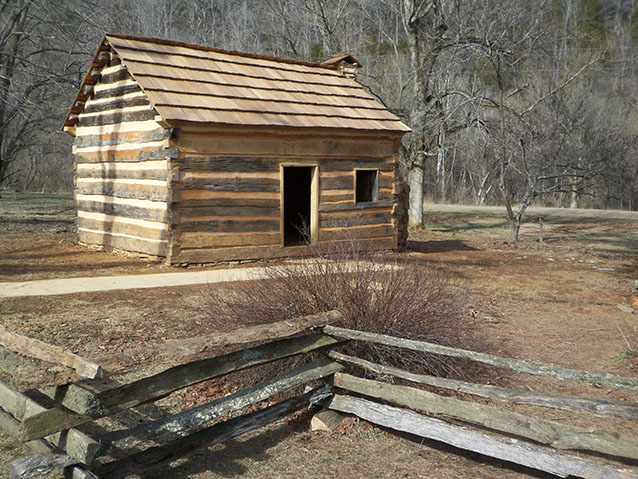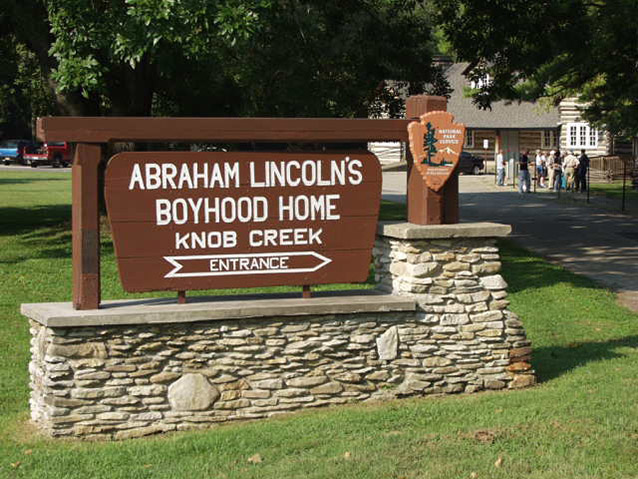The Abraham Lincoln Boyhood Home is located in LaRue County, Kentucky, seven miles from Hodgensville. The cultural landscape includes the historic tourist area and the adjacent agricultural fields and woodlands. The 228 acre site is a flat valley along Knob Creek with several knobs, or hills, rising steeply nearby.
"The place Knob Creek, I remember well— but I was not born there... My earliest recollection, however, is of the Knob Creek place." Abraham Lincoln, in a letter to Samuel Haycraft, 1860 (NPS Cultural Landscape Inventory)

NPS
The landscape also includes two historic buildings and a picnic area along the old Bardstown Green River Turnpike. The Lincoln Tavern is a one-and-a-half story log building, constructed in 1933. The tavern was built to serve motorists stopping by the site and to exhibit Lincoln memorabilia. The second historic building is a single pen log cabin, reconstructed in 1931-33 (from ca. 1800 logs) that replicates Lincoln’s boyhood home. The logs have half dovetailed notching and mud chinking. The cabin once held domestic and agricultural artifacts and is currently being stabilized.

NPS
The Abraham Lincoln Boyhood Home on Knob Creek is locally significant for its role in LaRue County tourism. The site commemorates the iconography of Abraham Lincoln. The landscape has features that contribute to the historic tourist site (1933-1938) and has further significance as the setting of Abraham Lincoln's formative years (1811-1816). Although the original cabin does not exist, the landscape maintains good integrity for the period Abraham Lincoln lived at Knob Creek as well as the commemoration of his early rural life.
The commemorative Lincoln landscape conveys the history of the tourism in LaRue County and includes not only the contributing tavern and single pen log cabin, but additional landscape features. The orientation of the buildings to the highway and the semi circular entrance drive accommodate motorists and highlight the iconography associated with Lincoln. The tavern and cabin face the main road and the drive provides simple, direct access to visitors.

NPS
The context of Lincoln's early childhood helped to shape the site in the 1930s, but many aspects of the landscape still exist from the time Lincoln lived at Knob Creek. Natural landscape features contribute to the setting that Lincoln once looked out on as a young boy. Knob Creek, the flat valley farmland, and the steep knobs still communicate the feeling and sense of place that Lincoln first experienced.
The rural setting and natural features still convey the character of Knob Creek Lincoln remembered. The road, now US highway 31, is also a contributing historic feature that shaped his worldview. The Bardstown Green River Turnpike was a major route of transportation and Lincoln likely experienced locals and travelers passing by. The landscape of the Boyhood Home conveys the setting and context in which young Lincoln spent his early, formative years and the later commemoration of the site as a tourist destination.
Quick Facts
- Cultural Landscape Type: Designed / Vernacular
- National Register Significance Level: Local
- National Register Significance Criteria: A,B
- Period of Significance: 1811-1816, 1925-1941
Landscape Links
Last updated: January 13, 2026
